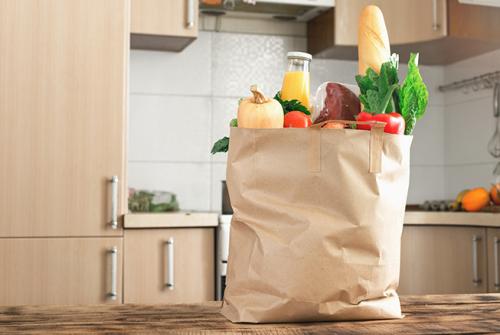
Blog post
Tips for a kidney-friendly pandemic pantry

Since people with kidney disease are high risk for serious cases of COVID-19, it is a good idea to limit the number of times you go to the grocery store as much as possible. You can take advantage of grocery delivery or curbside pickup services, but you may find it hard to reserve a timeslot due to high demand. If you need to go to the store, it is best to do so during their special hours for people who are immunocompromised and high risk. While at the store, be mindful of those around you to stay at least six feet away from others at all times. You may find that it is easier to make larger, less frequent grocery purchases, rather than smaller, more frequent purchases. However you are able to get your food, you will want to be efficient and flexible when you shop to make sure you can stick to the food and fluid plan your doctor and dietitian have recommended for you.
Tips for a kidney-friendly pandemic pantry:
Stock up on frozen fruit
The most kidney-friendly fruits are berries and some stone fruits, so stock up on frozen berries of all types, apricots and mango. Armed with these ingredients, you will have multiple meal-enhancing options at your fingertips. Try adding frozen fruit to smoothies, smoothie bowls, breakfast porridge or oatmeal, yogurt parfaits, ice cream, pies, and even a quick strawberry shortcake while celebrating a Zoom birthday party or happy hour.
Make your own corn tortillas
Because corn is such a kidney-friendly ingredient, making your own corn tortillas is a healthy and fun activity you can do at home. Next time you shop for groceries, purchase some masa harina. You can follow our Homemade Corn Tortilla recipe on Kidney Kitchen™ and use your deliciously fresh tortillas to make tacos, quesadillas, corn chips and more — all without the added sodium and phosphates you'd normally find in packaged tortillas.
Stock up on canned fish
Like other canned goods, canned fish can last a while in your pantry. Canned fish is an easy way to give any meal a protein, calcium, vitamin D and omega-3 fatty acid boost. When purchasing, always remember to choose low-sodium options and check the nutrient label for phosphorous and potassium. You can even rinse with water before using to reduce the amount of sodium.
Get different kinds of grains
Rolled oats, barley, cornmeal, rice, pasta and all-purpose flour all last a long time and they also allow you to have diversity in what you eat. Rolled oats can go into oatmeal, porridge, cookies and muffins. Barley adds some energy boosting carbohydrates to soups, porridges and side dishes. In addition to tortillas, cornmeal can be used in cornbread, hush puppies, polenta and some desserts. Rice, pasta and flour can be used in countless recipes, including our Chicken Soup with Rice and Spice, Strawberry & Spinach Pasta Salad and Raspberry Cake.
Freeze vegetables for soup broth
Even low-sodium vegetable or chicken broth can have too much sodium and potassium for people with kidney disease. You can make your own vegetable broth by taking your edible vegetable scraps and peelings and freezing them in a plastic bag. Keep adding vegetables until the bag is full, then dump the contents into water and simmer for 20 minutes. Do not add salt. After cooking, strain the broth and freeze it. This will allow you to always have a supply of vegetable broth on hand for cooking, and it costs nothing to make.
Grow a windowsill garden
You do not need access to a backyard or community garden to grow a few herbs. You do not even need to have a proper window box — just find the window in your home that has the most continuous sunlight or buy a grow light online. You can purchase small herb plants online (or at your local farmers market or nursery when there isn't a pandemic) and place them on your windowsill. Remember to water them regularly. You will have a budget-friendly way to add rosemary, thyme, basil and more to your recipes. Herbs add so much flavor to meals and help you cut back on added salt.
For more meal ideas, type the ingredient of your choosing into Kidney Kitchen's recipe search to find all the recipes that include that ingredient.




